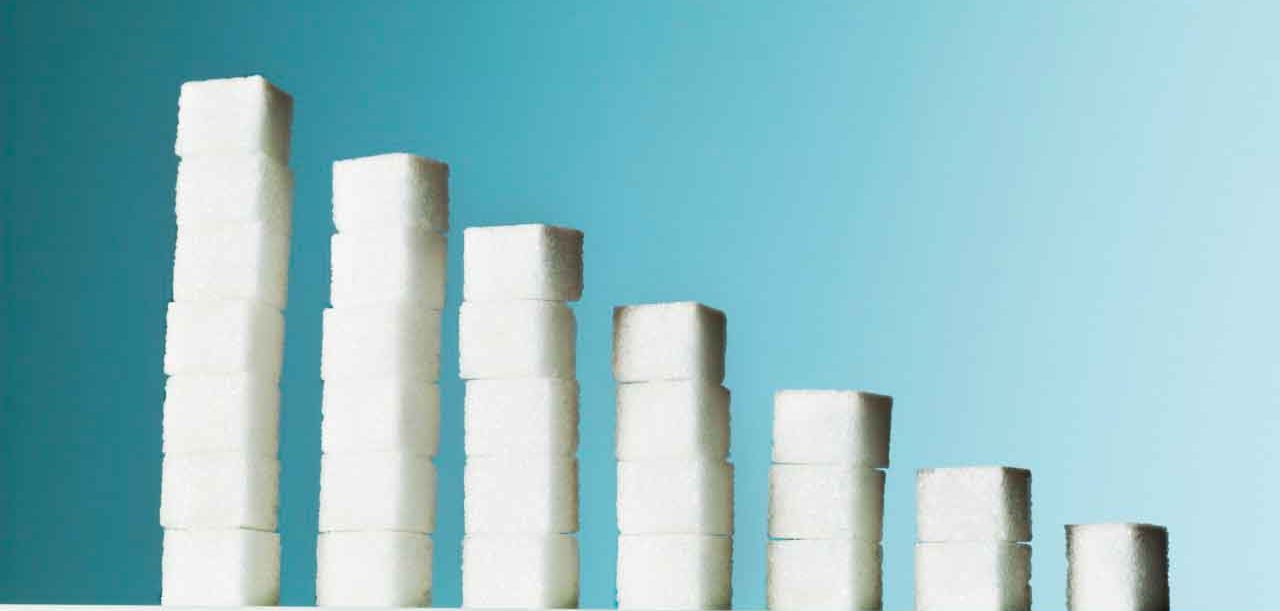How to Cut Back on Sugar

The craving for sugar can be as strong as the pull to alcohol.
We’ve known for a while that sweets can cause cavities and weight gain, but you may not realize the extent of other risks associated with too much sugar: colon and breast cancer, and other cancers, depression, high blood pressure, diabetes, and kidney and heart disease.
Cutting back is especially important if you experience sugar cravings. Most party drugs increase the brain chemical dopamine in a particular part of the brain; so do foods, but not as much. When rats are overfed sugar every day, their brains show changes similar to those seen when they are dependent on “opioids,” which people can get legally as painkillers. Other science shows similarities between addictive behavior and binge or compulsive eating.
In short, saying you’re “addicted to sweets” is more accurate than you may think. People may turn to addictive substances to help them endure other problems in their life. According to Jacob Teitelbaum, MD, co-author of “The Complete Guide to Beating Sugar Addiction,” intense sugar cravings are also often a sign of other health issues, and sugar helps us cope at a steep price.
YOU MIGHT ALSO LIKE: New Dietary Guidelines Infuriate and Please Simultaneously
Start with the obvious: cut back the sugar you add to coffee and tea by half and work down. For a substitute sweetener, Teitelbaum recommends stevia, which has no calories — but it’s much sweeter than sugar, so be sparing. Drink water or unsweetened beverages. Instead of candy and dessert, eat fruit — but not fruit canned in syrup. If you want to make a morning cereal sweeter, add fruit instead of honey.
As a first step, Teitelbaum recommends that you stay away from any processed food that lists a sweetener in the top three ingredients. Also stay away from foods based on white flour — bread and pasta — because these raise your body’s blood sugar quickly, as does white rice.
To get back to a desirable level of added sugar, you’ll have to be strict about finding it in foods that you may not think of as sweets, including processed foods and restaurant meals. Americans consume about 16 percent of their daily calories in added sugar, according to the Food and Drug Administration (FDA). The American Heart Association advises women to eat no more than 5 teaspoons a day of added sugar, and 9 teaspoons for men. Most of us are eating four times that amount. For example, a half-cup of coleslaw or spaghetti sauce contains 2 teaspoons of sugar or more. Restaurant food — including Chinese and Thai foods — may contain sugar in your main course.
Learn to read nutrition labels. You’ll see the word “Sugars,” which includes the sweetness built into ingredients like milk. The FDA has proposed putting a new line for “Added Sugars” and is now considering another approach: adding a “percent daily value” of added sugar. The recommendation would be no more than 10 percent of total calories a day. If this happens, food manufactures will have to total up ingredients like “invert sugar,” “malt syrup,” “high fructose corn syrup,” “corn syrup,” “sucrose,” “maltose,” “dextrose,” “fructose,” “glucose,” “lactose,” “cane juice,” “dehydrated cane juice,” “cane juice solids,” “cane juice crystals,” “dextrin,” “maltodextrin, “barley malt,” “beet sugar,“ “carob syrup,” “date sugar,” “fruit juice concentrate,” “dehydrated fruit juice,” “fruit juice crystals,” “turbinado, “ “sorghum syrup,” “ethyl maltol,” and so on.
If you’ve been getting too much sugar, you may feel irritable and listless in the first 10 days you cut back, Teitelbaum warns. To make the transition, he suggests using the sweetener stevia. You can add ribose powder to any food or drink (5,000 mg a day) to boost your energy. Ribose is about as sweet as sugar.
Within two weeks or so, you can expect to feel a burst of energy and fewer aches and pains. However, you may still need to deal with other health issues associated with sugar cravings, he says, including testosterone dips in middle-aged men, menopause, and Candida yeast overgrowth in the gastro-intestinal tract.
YOU MIGHT ALSO LIKE: Is Sugar Worse for Your Blood Pressure than Salt?
Updated:
April 09, 2020
Reviewed By:
Christopher Nystuen, MD, MBA